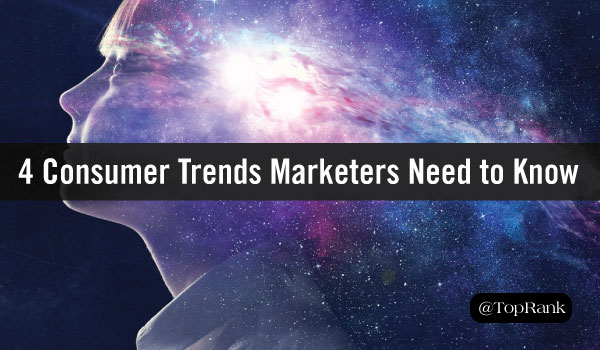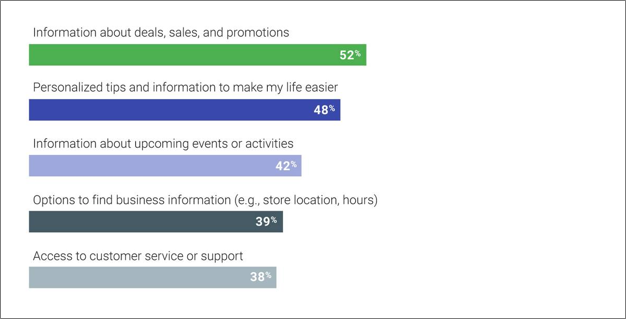
Ask any digital marketer if they’ve been able to set their strategy on autopilot over the past decade, and I bet you’ll get a laugh or two—as well as an emphatic “No.” If we’ve learned anything it’s that the digital landscape is simply too fast-changing to keep the business as usual mindset.
But while the global rise of the internet, the explosion of social media, and the development of mobile technologies and other digital tools and platforms are undoubtedly “to blame” for the constant state of change we operate in—it’s really the everyday use of these innovations that requires our flexibility and attention.
Simply put, thanks to these modern essentials, our behavior, expectations and attitudes as consumers have changed—and they’ll continue to. The mobility and network access enabled by mobile phones and tablets, coupled with the incredible amount of content now available (thanks content marketers), means consumers now have the majority stake in developing their own customer journey.
In fact, last year comScore reported that users spend an average of 69% of their media time on smartphones—and other research shows that the great majority of people use the internet and mobile technologies to research products before they buy.
But what’s the next stage of evolution in consumer behavior? And how can digital marketers adapt their strategies to fit with consumers want and expect?
Below we highlight some of the consumer trends that will have (and are already having) a big impact on digital and content marketing in 2018 and beyond.
#1 – Voice-activated personal assistance will continue to shape consumer behavior.
While voice-command technology began to emerge in the early part of the century, it’s taken on new life over the past couple years thanks to the emergence of mobile personal assistants, and the birth and increasing adoption of tools like Amazon Echo, Cortana and Google Home.
To put it simply, these voice-activated technologies just make life simpler. According to Think with Google’s research, the top reasons people turn to voice-activated speakers are:
- It allows them to more easily multitask.
- It enables them to do things faster than other devices.
- It empowers them to instantly get answers and information.
- It makes their daily routine easier.
What does this mean for brands and marketers? Google says their research also shows that people welcome brands to be part of their experience, and they’re open to receiving information that’s helpful and relevant to their lifestyle.

Image Credit: Think with Google
As a result, brands and marketers have the opportunity to explore digital advertising opportunities in this arena. But, perhaps more immediately important, optimizing for voice search is critical.
According to Gartner predictions, 30% of all web browsing sessions will be done without a screen by 2020. Some voice search optimization tactics include focusing on featured snippets, using more conversational keywords and content structure, and adding structured data markup to help search engines better understand the context of the content you’re providing.
#2 – Consumers want to experience a brand, product or service before they buy—and video is the conduit.
I think it’s safe to say that video is no longer an emerging or rising marketing trend—it’s part of the now and the future. According to Content Marketing Institute (CMI) and MarketingProfs’ 2018 content marketing benchmark reports, 72% of B2B marketers and 76% of B2C marketers use pre-produced video as part of their strategies.
It’s certainly not difficult to see why video has taken off. Humans are visual creatures by nature, and as the internet, social media and technology have evolved, consumers are spending an increasing amount of time in front of the screen—elevating video as a preferred engagement medium.
But a bit of change is in the air. Consumers don’t just want engagement these days. They’re also looking for an experience—especially when it comes to products they’re interested in.
According to other research by Think with Google, video is straight up changing how people shop. In fact, in the past year, 40% of YouTube users turned to the platform to learn more about a product before they purchased it. In addition, the watch time of “Shop with me” videos—where viewers actually follow video creators as they shop—has increased a whopping 1,000% over the past two years.

Image Credit: Think with Google
Essentially, consumers are going beyond third-party review sites and word-of-mouth referrals, and looking to video content to learn the good, the bad and the ugly about the products they’re pondering. This means it’s time for B2B and B2C brands alike to elevate the stories they tell using video. Here’s what Think with Google had to say:
“Since many users aren’t going to be able to physically touch a product before they buy it, brands need to come up with creative ways to help people ‘experience’ it online. Think of ways to bring your product to life online so it stands out—like using virtual reality or augmented reality—such as L’Oréal’s Makeup Genius app that lets users virtually try on makeup.
“There’s a whole community of creators testing and evaluating products, including yours. That means users will be validating any claims you make, so make sure your product can live up to them.”
Consumers are looking for an experience – especially when it comes to products they’re interested in. #digitalmarketing #videomarketing @CaitlinMBurgess Click To Tweet
Read: Report: What Marketers Need to Know About the ‘State of Video Marketing’
#3 – Consumers are growing more curious—as well as more impatient.
To say the least, 2017 was an interesting year socially, environmentally, and—of course—politically. As the year unfolded, it’s no surprise that people turned to the internet and search engines to get a better understanding of what’s happening in their communities, countries, and around the world.
From Google’s perspective, the wide world of search in 2017 also unveiled new consumer behaviors. In yet another recent Think with Google piece, 2017 saw a “new super-empowered consumer” take shape.
“We found that people are more curious, more demanding, and more impatient than ever before,” the article said. “We saw evidence of this throughout 2017, and it will be critical for marketers to understand these new behaviors as they move into 2018.”
Essentially, people are getting more specific than ever in their searches—and they expect and demand useful, relevant information quickly. The takeaway for marketers here is that long-tail search term variations will expand—and perhaps even become a new normal. As a result, there’s no better time to double-down on creating—what TopRank Marketing likes to call—best-answer content.
What does best-answer content look like? In a nutshell, best-answer content is:
- Addressed to a specific audience
- Addressed to a specific query
- Substantial
- Comprehensive, addressing complimentary queries and crosslinking
- Not blatantly promotional
As our CEO, Lee Odden, so eloquently once said: “Stop creating content. And start making answers.”
This should’ve always been part of a marketers mission, but it will be even more critical in the years to come as search and consumer preferences evolve.
In addition, use the data and insights at your fingertips (and pursue new sources) to get a deeper understanding of audience needs, wants and attitudes, develop more holistic consumer personas, and create content and messaging that is highly-personalized. Personalization will be key for meeting consumer demand and expectations.
Stop creating content. And start making answers. – @leeodden #contentmarketing #BeTheBestAnswer Click To Tweet
#4 – Distrust is at an all-time high—which calls for more transparency and authenticity in marketing.
We’ve know for a while that consumers are becoming increasingly weary of advertising and brand messaging. But over the past couple years, the general state of trust across the globe has “imploded.”
The 2017 Edelman Trust Barometer Survey—an annual trust and credibility survey—showed the largest-ever drop in trust across the world’s four major institutions: business, government, media and NGOs.

In the Executive Summary, the opening note is actually titled “The Implosion of Trust,” and it cites major social, economic and political upheaval—and rising “fake news” speculation—as the unsurprising culprits. But the good news is that Edelman’s findings also show that business is the “last retaining wall” of trust.
As a result, it’s more important than ever for brands and marketers to commit themselves to transparency and authenticity in all that they do. From embracing both positive and critical consumer feedback on public forums and social media, to losing the jargon and developing a more human voice—transparency and authenticity need to be baked into your strategy, rather than being afterthoughts.
One way to add both value, authenticity and credibility to your marketing efforts will be through the use of influencers. Influencer marketing has exploded over the past couple years, and it’s not going anywhere in 2018. Regardless of the type of content, there’s always an opportunity to include credible voices and opinions that will touch and resonate with your audience.
Read: Our Top 10 Influencer Marketing Posts of 2017 Plus Thoughts on 2018
The Only Constant is Change
As you move forward in 2018, now is not the time to set and forget your digital marketing strategy. On the contrary, you need to be at the ready to make meaningful change.
The fact of the matter is that consumers are playing an increasingly powerful role in their buying journey—and brands and marketers need to embrace this if they’re going to survive and thrive into the future.
Content is at the core of every digital marketing strategy. What other trends do marketers need to be on the lookout for? Read Content Conversations: Content Marketing Predictions for 2018 featuring insights from Ann Handley, Joe Pulizzi, Chris Brogan, Alexandra Rynne, Tim Washer, Dayna Rothman, and Chris Moody.

Comments are Closed